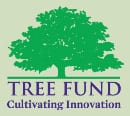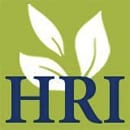The purpose of these pages is to lead decision makers and motivated individuals through a series of steps to develop a street tree management plan.
The information presented here is targeted to smaller communities in New York State. Anyone is welcome to use this information to conduct inventories for villages outside of New York or as a model to replicate our process on a region-wide basis.
Developing a Street Tree Master Plan
The development of a master plan is an important tool in managing our community forests. A management plan establishes a clear set of priorities and objectives. The Northeast Center for Urban and Community Forestry has developed a Guide to Completing a Street and Park Tree Management Plan plus a Sample Management Plan to assist small to medium sized communities in developing management plans. Other aspects of a master plan include a municipal ordinance and a street tree inventory.
Why a Master Plan?
- To decrease the risk and the cost associated with tree branch failures
- To provide greater energy savings and pollution reduction through maintaining a healthier urban forest
- To increase storm water recharge and reduce the need for building more storm drainage infrastructure
- To help beautify the environment and create a community identity
See, for example, what the Village Green Committee in Red Hook, NY, is doing ensure the long-term health of the village’s tree population.
Getting Started – Citizen Tree Groups
Developing a master plan takes input from many different individuals who will be impacted by the management of the community forest. Formal citizen groups such as a Tree Board can assist tree managers in relevant ways to support, encourage and improve the growth of the community forest. Tree Board members can be a village trustee, a Department of Public Works employee, or a resident who cares about village trees. The Tree Board can work with local agencies such as Cornell Cooperative Extension or the New York State Department of Environmental Conservation to help set up the management planning process. A Tree Board can also be empowered to oversee the community forest master plan by a municipal tree ordinance. If given this responsibility, the next step for this group would be to organize an inventory of all street trees and planting spaces within the municipal boundaries.
How to Write a Municipal Tree Ordinance
A tree ordinance is a formal long-term policy for establishing tree care policy. An ordinance sets up permanent procedures and establishes legal authority. The tree ordinance establishes a permanent and official policy for the community. It declares standards for selection, planting and maintenance. It can also provide a reasonable basis for dealing with the public. How do you get one in place?
- Start with a sample tree ordinance
- Work with a small group representing various interests including local government, street maintenance, tree care professionals, utilities, and the general public.
- Make the ordinance clear, reasonable, and concise.
- Keep the process as public as possible.
- Follow standard procedures to get the ordinance into law. Publicize the ordinance widely after it becomes law. Make sure all municipal agencies are aware of the ordinance and its provisions.
The Street Tree Inventory
Conducting a street tree inventory is essential to developing a community forest master plan. It is a complete survey of all trees and planting sites within the municipal right-of-way. An inventory:
- Reveals the species composition, age, and condition of community trees
- Supplies guidelines for new street tree plantings
- Identifies where to focus limited resources and allows tree managers to set priorities for pruning and removal work
- Quantifies the economic and environmental benefits provided by the community forest
The street tree inventory allows a community to manage the community forest proactively rather than reactively in order to promote its long term health and maximize the benefits it provides.
Conducting a tree inventory usually means hiring an arborist or consulting forester.





